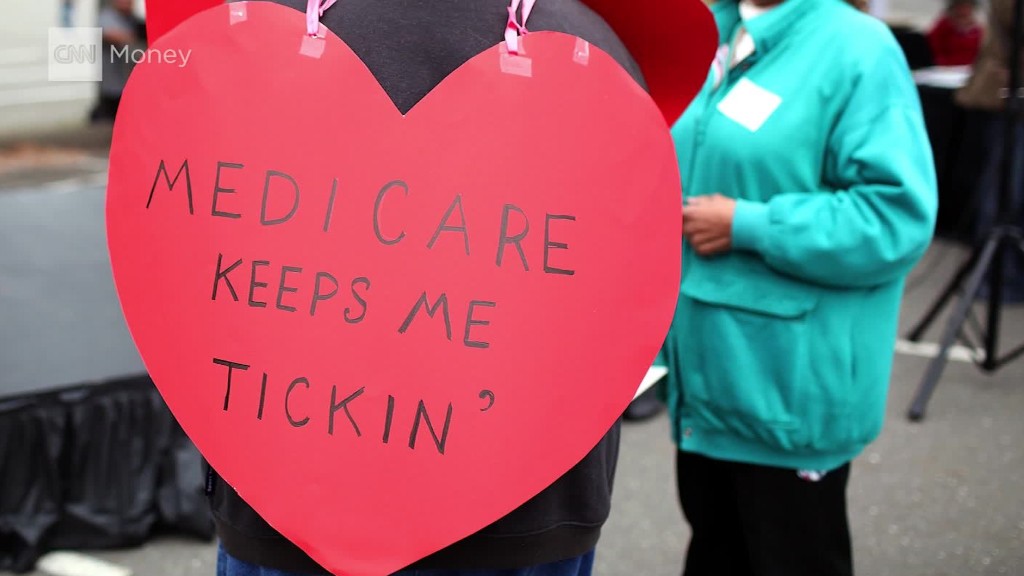
Republicans have argued for years that spending has fueled the nation's debt and should be curtailed.
Now that the GOP controls both the House and Senate, and Tea Party favorite Mick Mulvaney is President-elect Trump's choice to run the White House budget office, more domestic spending cuts may be on tap, right alongside the big tax cuts that Trump has promised.
But there's another area that costs Uncle Sam even more: tax breaks.
Tax breaks -- which include credits, deductions, exclusions and exemptions -- reduced revenue by at least $1.5 trillion in fiscal year 2016, according to the Congressional Budget Office.
Meanwhile, the amount spent on domestic and defense programs in the same period? Just under $1.2 trillion.
Those spending programs, which make up a third of the federal budget, are not the primary drivers of the debt, yet they are where the lion's share of spending cuts have occurred in recent years. In fact, spending on them is nearing its lowest level as a share of GDP in half a century.
They are also the areas Congress allocates money to every year. The rest of federal spending goes toward entitlement programs and interest on the debt, which essentially are on autopilot and are the biggest drivers of debt long-term.
Lawmakers could choose to exert control over tax breaks every year too, but they don't.
"We rarely even take a look at, let alone review or budget, the tax breaks. We sweat bullets over outlays on the budget, to the point [where] we've shut the government down over how much to spend," Don Kettl, professor at the University of Maryland School of Public Policy, noted in a recent op-ed.
Related: Domestic spending is near 53-year lows. Yet Congress keeps cutting ...
Here are the 10 most expensive tax breaks and how much they reduced revenue in 2016:
1. Treating money your employer pays for your health insurance as tax-free to you ($144 billion)
2. Lower rates on capital gains and dividends compared to regular income ($135 billion)
3. Tax deferral on the foreign profits of U.S. companies ($109 billion)
4. Exclusion of contributions and earnings in 401(K)s and other defined contribution plans ($83 billion)
5. Mortgage interest deduction ($77 billion)
6. Earned income tax credit ($73 billion)
7. State and local tax deduction ($65 billion)
8. Obamacare insurance subsidies ($54 billion)
9. Exclusion of contributions and earnings in defined benefit pension plans ($57 billion)
10. Child tax credit ($56 billion)
Why have tax breaks at all?
Historically, lawmakers use the tax code to spur certain activities -- e.g. buying a house or innovating through research and development. They also use it to encourage social goals -- for example, rewarding low-income parents who work.
Then, of course, there are the special tax breaks that offer little bang for the buck but get written into the code for specific industries thanks in large part to their persistent lobbying.
Some fiscal policy experts like Kettl and former CBO director Donald Marron argue that tax expenditures should be included in any calculation of how much the government "spends." Doing so would give a truer sense of the size of government as well as a clearer indication of the money going out the door directly or indirectly.
The federal budget -- a measure of direct spending -- came to nearly $3.9 trillion in 2016. If tax expenditures were included, the number would jump to roughly $5.4 trillion.
"Tax breaks are spending by another means," Kettl said. "Every dollar by which you reduce revenue is a dollar that increases the deficit."


